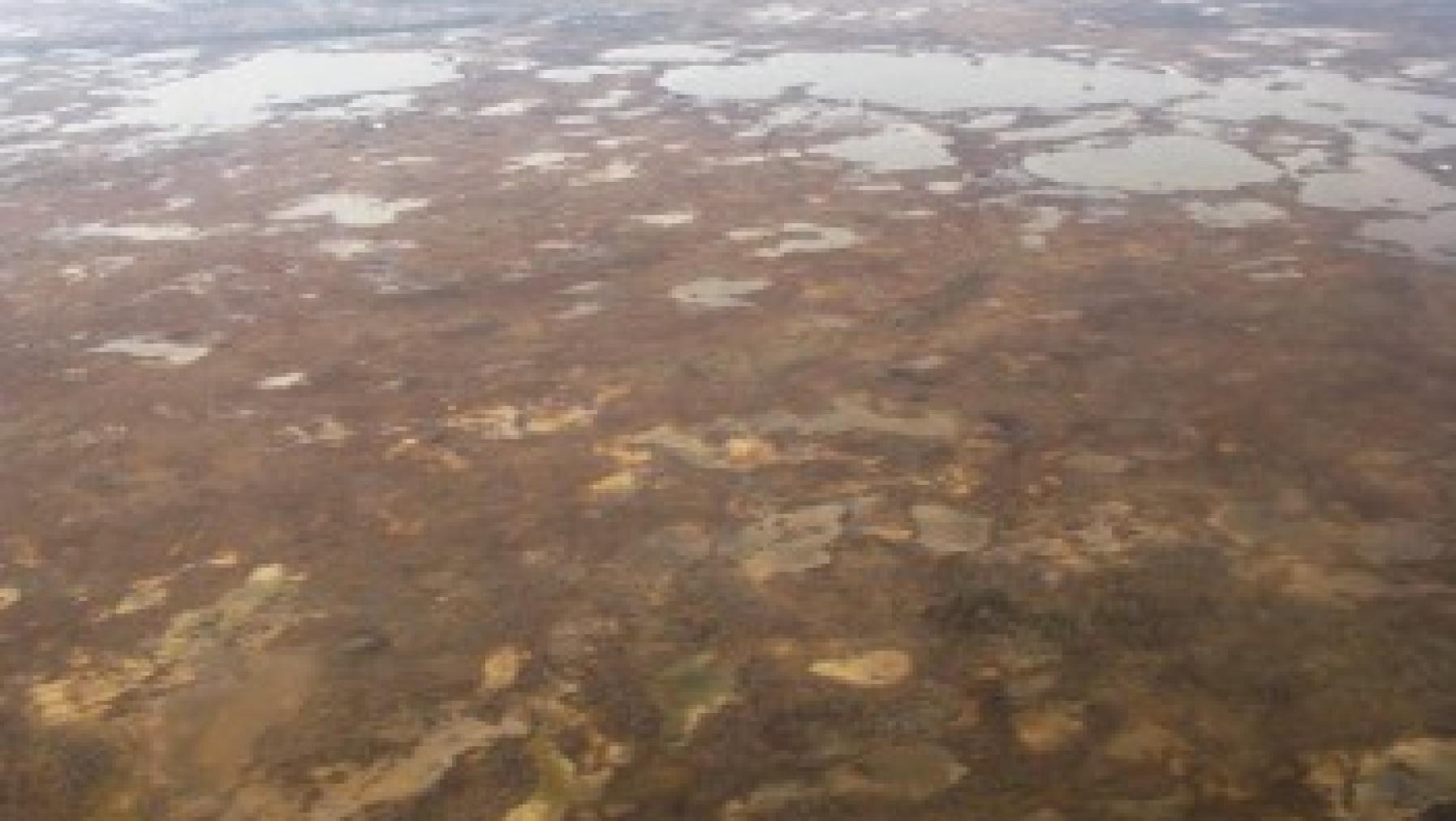Climate
Cool summers and very cold winters characterize the tundra zone, at the northernmost limit of plant growth. Areas of low rainfall that should be desert-like are moist because evapotranspiration is low (because of low temperatures) and permafrost holds water. Winds are often severe. Day length varies maximally with season, with all-light summers and all-dark winters, affecting the biota substantially.
Soils
The ground stays permanently frozen, the permafrost depth varying with the air temperatures of different areas. The soils are often gleys, poorly drained and alternately wet and dry, thus with mixtures of gray ferrous oxide and reddish ferric oxide compounds because they are alternately reduced and oxidized. There is much very recently formed soil and bare rock, everywhere exposed by recently retreated glaciers. Thus there are large areas with very low nutrient content.
Vegetation
This is basically a two-dimensional habitat, with shrubs up to several meters high in the southern part getting smaller and smaller toward the north, finally flat on the ground (primarily willows), as are mosses, lichens, and the rosettes of most forbs in exposed areas. With even greater climatic extremity at the north extreme, vegetation is lacking. Grasses and sedges are important in drier and wetter areas, respectively. Low areas can be very wet, ridges very dry at the same site because of the combination of low rainfall and persistent surface water, so there is substantial variation in plant communities even in this simple environment.
Diversity
Overall plant and animal diversity is low, as the environment is harsh and structurally simple; diversity decreases toward the north to an essentially lifeless polar zone. Many major taxonomic groups of both plants and animals are poorly represented or absent. Dominant plant groups include Cyperaceae, Poaceae, Salicaceae, and Brassicaceae. Mammals are restricted to species that are winter-active, either above or below the snow cover. Permafrost precludes deep burrowing and therefore hibernation for the most part; also, temperatures are too low for hibernating animals to sustain metabolism throughout the winter (the arctic ground squirrel is a deep-burrowing exception). A few birds are winter-active, but the vast majority migrate south after an abbreviated breeding season. The diversity of some bird groups, particularly sandpipers, is high in the breeding season. For the most part, ectothermal ("cold-blooded") animals are absent, but spiders and some insect groups are moderately well represented.
Plant Adaptations
Most tundra plants grow flat on the ground, even members of genera that form upright shrubs and trees farther south, with all or part of their stems, leaves, and even flowers densely haired, adaptations against desiccation by the dry winds. Some plants are so low and densely packed that they deserve the name "cushion plants." Flowers of at least some species project well above this mat to be conspicuous to pollinators. Some flowers are parabola-shaped, to reflect sunlight into the center in which (pollinating) insects rest to increase their temperature. Some flowers are heliotropic, facing the sun as it moves for increased heat. In this open, windy habitat, the majority of seeds are wind-dispersed. There are many adaptations to poor soil. Legumes have root nodules with bacteria that transform atmospheric nitrogen to nitrates that can be used by the plants. Some plants grow only around areas of heavy animal use, where nitrogenous wastes serve in lieu of soil nutrients. It is difficult for seeds to become established, so most plants are perennials. Plant growth is slow, so many herbs bloom at very small sizes.
Animal Adapatations
Arctic birds are primarily those with long wings and rapid flight, particularly waterfowl, jaegers and shorebirds, which are able to make long migrations and effectively utilize the high productivity of this environment in summer and escape its winter harshness. Some mammals and birds turn white in winter for camouflage, brown again in summer. Insects are best represented by aquatic groups, protected from winter extremes under water. Many utilize glycerol in their body tissues as antifreeze. Large species and individuals of endothermal ("warm-blooded") vertebrates are favored because their low surface-to-volume ratio and short appendages minimizes heat loss. Large predators that can eat a variety of prey sizes are favored, as are generalized herbivores.
Human Effects
This biome supported historically very low human population densities, so there has been little effect on terrestrial plant communities until recent times, when advanced technology has allowed more intense use of the land for purposes such as oil extraction. This has scarcely changed the overall environment in the zone, but the potential for oil spills and other chemical pollution has increased. Even low levels of disturbance of tundra can have an intense local effect, as the vegetation regenerates very slowly. When permafrost is disturbed, as with heavy vehicle traffic, the resulting thaw changes water regimes substantially, replaces existing tundra with marsh. Hunting pressure by natives on larger arctic animals was light until modern weapons became available, then there was a rapid local extirpation of some species. More recently, the higher temperatures of global climate change, generally acknowledged to be human-caused, have melted permafrost, dried lakes, and reduced arctic ice cover, all with potentially severe consequences.


